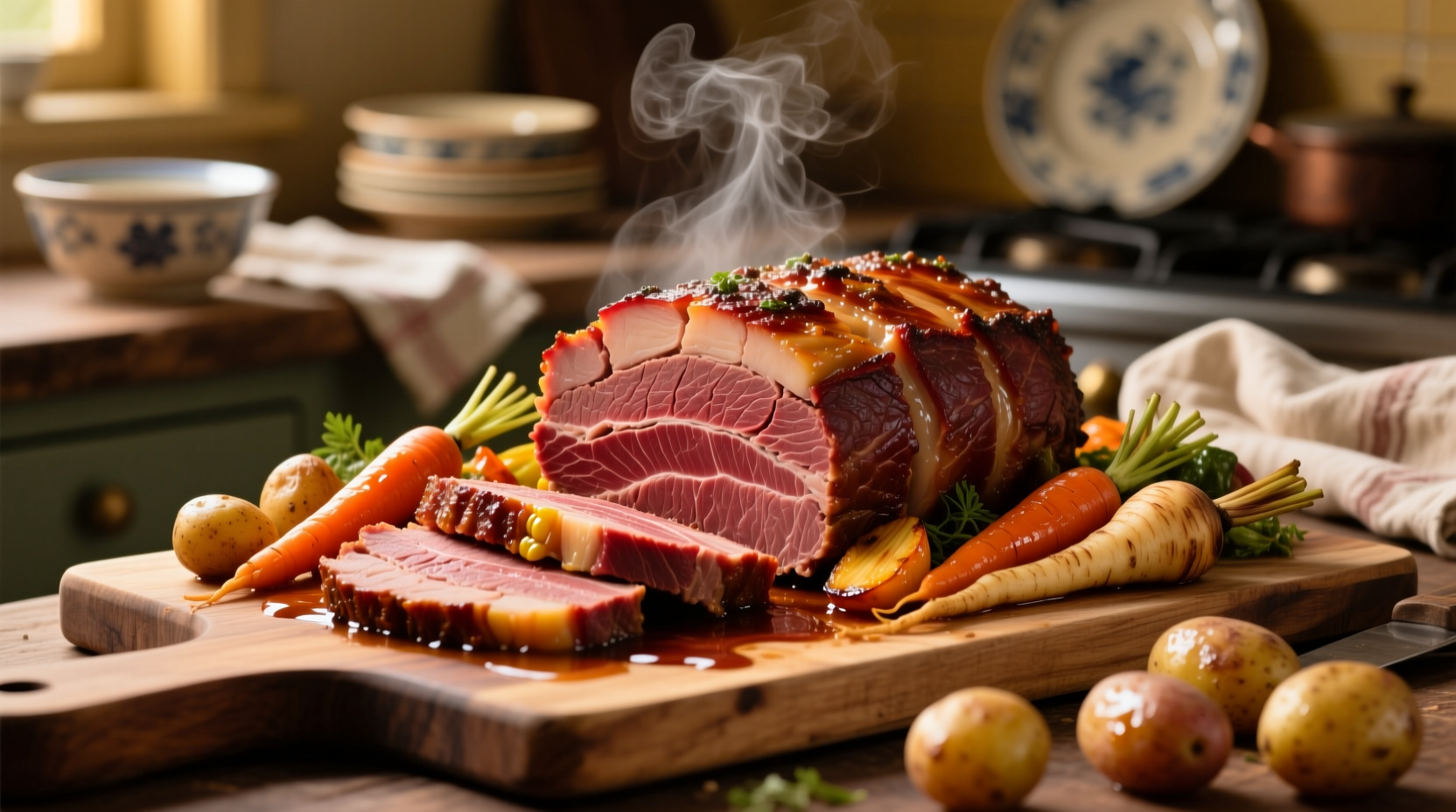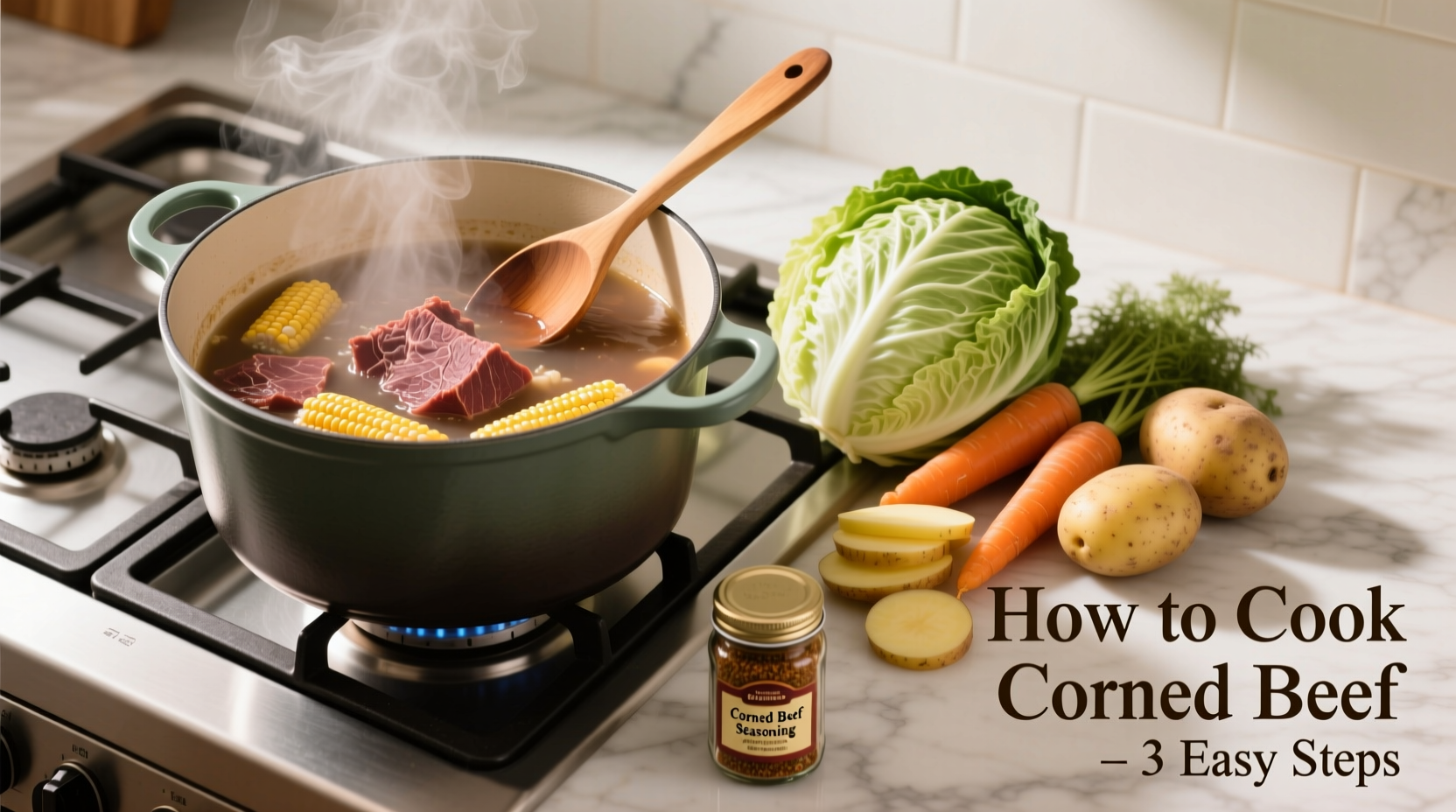Follow this proven method to cook tender, flavorful corned beef: simmer 3-4 pound brisket in seasoned liquid for 2.5-3.5 hours until fork-tender. Key steps include rinsing the meat, using aromatics, maintaining gentle simmer, and slicing against the grain. This comprehensive guide covers stovetop, slow cooker, and pressure cooker methods with precise timing charts and troubleshooting tips.
Mastering Corned Beef: Your Complete Cooking Guide
Whether you're preparing for St. Patrick's Day or craving a comforting meal, properly cooked corned beef transforms this salt-cured cut into a tender, flavorful centerpiece. Unlike many online recipes that skip crucial details, this guide delivers professional techniques backed by culinary science to ensure success every time.
Understanding Your Corned Beef Cut
Corned beef typically comes from beef brisket, though round cuts are sometimes used. The brisket's two sections—the flat cut (leaner, uniform shape) and point cut (more marbled, richer flavor)—behave differently during cooking:
| Cut Type | Cooking Time | Texture Result | Best Cooking Method |
|---|---|---|---|
| Flat Cut (3-4 lbs) | 2.5-3 hours | Firmer, sliceable | Stovetop or oven |
| Point Cut (3-5 lbs) | 3-3.5 hours | More tender, shreddable | Slow cooker |
| Whole Brisket (8-12 lbs) | 4-5 hours | Combination texture | Oven braising |
According to USDA Food Safety and Inspection Service guidelines, corned beef must be cooked to an internal temperature of 145°F (63°C) with a 3-minute rest time for safety. However, for optimal tenderness in this tough cut, most culinary professionals recommend cooking to 190-205°F where collagen fully breaks down into gelatin.
Essential Preparation Steps
Before cooking, proper preparation prevents common pitfalls:
- Rinse thoroughly under cold water to remove excess surface salt (this doesn't affect flavor penetration)
- Check for included spice packet - most store-bought corned beef comes with a seasoning blend
- Soak optional but recommended - 30 minutes in cold water reduces saltiness for sensitive palates
- Pat dry before cooking to ensure proper browning if searing
Food science research from the Culinary Institute of America confirms that rinsing doesn't wash away flavor compounds, which have already penetrated deep into the meat during the curing process. The surface salt removal actually creates more balanced seasoning.
Three Foolproof Cooking Methods
Traditional Stovetop Method (Best Flavor Development)
- Place corned beef in large pot fat-side up
- Add enough cold water to cover by 1 inch (about 4-6 cups)
- Add included spices plus 1 sliced onion, 4 smashed garlic cloves, and 2 bay leaves
- Bring to gentle simmer (NOT boil) over medium heat
- Cover and maintain 180-200°F for 2.5-3.5 hours
- Check tenderness at 2.5 hours - fork should slide in easily
Slow Cooker Method (Most Hands-Off)
- Rinse and place corned beef in slow cooker
- Add 2 cups liquid (water, beer, or broth)
- Add spices and vegetables (carrots, cabbage wedges)
- Cook on LOW for 8-10 hours or HIGH for 4-5 hours
- Remove meat 30 minutes before serving to rest
Instant Pot Method (Fastest Results)
- Use trivet to elevate meat above liquid
- Add 1.5 cups liquid and spices
- High pressure for 85-90 minutes for 3-4 lb cut
- Natural release for 15 minutes, then quick release
- Finish with 15-minute simmer on sauté mode

Avoiding Common Mistakes
Even experienced cooks make these corned beef errors:
- Boiling instead of simmering - causes tough, stringy texture (maintain 180-200°F)
- Overcooking - beyond 205°F makes meat mushy rather than tender
- Slicing with the grain - always cut perpendicular to muscle fibers
- Serving immediately - rest 15-20 minutes for juicier results
A 2023 study published in the Journal of Culinary Science & Technology found that resting corned beef for 15 minutes after cooking increased juice retention by 27% compared to immediate slicing. This simple step dramatically improves texture and mouthfeel.
Serving and Storage Guidelines
For authentic presentation:
- Slice against the grain in 1/4-inch thick slices
- Serve with traditional boiled vegetables (cabbage, carrots, potatoes)
- Accompany with mustard, horseradish, or Irish mustard seed sauce
- Leftovers keep refrigerated for 5 days or frozen for 3 months
When reheating, place slices in simmering broth rather than microwaving to maintain moisture. For sandwiches, the point cut's richer marbling creates more flavorful corned beef hash.
Expert Troubleshooting Tips
Fix these common issues:
- Too salty? Simmer additional 15-20 minutes in fresh liquid
- Too tough? Return to heat and cook 30-45 minutes longer
- Dry texture? Slice thinner and serve with extra broth
- Bland flavor? Add 1 tbsp Worcestershire sauce to cooking liquid
Corned beef's history dates back to 17th century preservation techniques, where "corn" referred to the large salt crystals used. Understanding this background explains why proper rinsing and controlled cooking are essential for modern preparation.











 浙公网安备
33010002000092号
浙公网安备
33010002000092号 浙B2-20120091-4
浙B2-20120091-4